
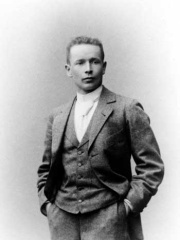
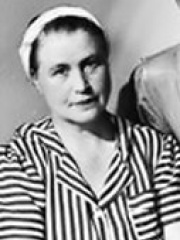
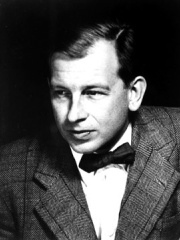
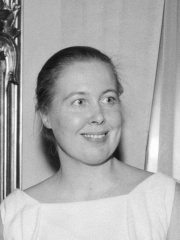
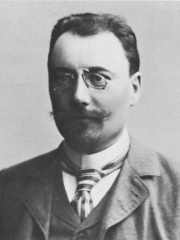
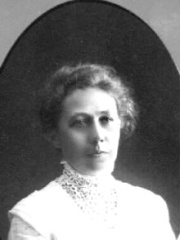
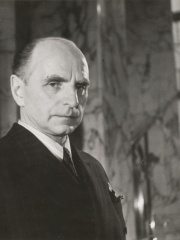
The Most Famous
ARCHITECTS from Finland
This page contains a list of the greatest Finnish Architects. The pantheon dataset contains 518 Architects, 11 of which were born in Finland. This makes Finland the birth place of the 12th most number of Architects behind Netherlands, and Japan.
Top 10
The following people are considered by Pantheon to be the top 10 most legendary Finnish Architects of all time. This list of famous Finnish Architects is sorted by HPI (Historical Popularity Index), a metric that aggregates information on a biography's online popularity. Visit the rankings page to view the entire list of Finnish Architects.

1. Alvar Aalto (1898 - 1976)
With an HPI of 81.52, Alvar Aalto is the most famous Finnish Architect. His biography has been translated into 84 different languages on wikipedia.
Hugo Alvar Henrik Aalto (Finnish: [ˈhuːɡo ˈɑlʋɑr ˈhenrik ˈɑːlto]; 3 February 1898 – 11 May 1976) was a Finnish architect and designer. His work includes architecture, furniture, textiles and glassware, as well as sculptures and paintings. He never regarded himself as an artist, seeing painting and sculpture as "branches of the tree whose trunk is architecture." Aalto's early career ran in parallel with the rapid economic growth and industrialization of Finland during the first half of the 20th century. Many of his clients were industrialists, among them the Ahlström-Gullichsen family, who became his patrons. The span of his career, from the 1920s to the 1970s, is reflected in the styles of his work, ranging from Nordic Classicism of the early work, to a rational International Style Modernism during the 1930s to a more organic modernist style from the 1940s onwards. His architectural work, throughout his entire career, is characterized by a concern for design as Gesamtkunstwerk—a total work of art in which he, together with his first wife Aino Aalto, would design not only the building but the interior surfaces, furniture, lamps, and glassware as well. His furniture designs are considered Scandinavian Modern, an aesthetic reflected in their elegant simplification and concern for materials, especially wood, but also in Aalto's technical innovations, which led him to receiving patents for various manufacturing processes, such as those used to produce bent wood. As a designer he is celebrated as a forerunner of midcentury modernism in design; his invention of bent plywood furniture had a profound impact on the aesthetics of Charles and Ray Eames and George Nelson. The Alvar Aalto Museum, designed by Aalto himself, is located in what is regarded as his home city, Jyväskylä. The entry for him on the Museum of Modern Art website notes his "remarkable synthesis of romantic and pragmatic ideas," adding His work reflects a deep desire to humanize architecture through an unorthodox handling of form and materials that was both rational and intuitive. Influenced by the so-called International Style modernism (or functionalism, as it was called in Finland) and his acquaintance with leading modernists in Europe, including Swedish architect Erik Gunnar Asplund and many of the artists and architects associated with the Bauhaus, Aalto created designs that had a profound impact on the trajectory of modernism before and after World War II.

2. Eliel Saarinen (1873 - 1950)
With an HPI of 66.10, Eliel Saarinen is the 2nd most famous Finnish Architect. His biography has been translated into 40 different languages.
Gottlieb Eliel Saarinen (, Finnish: [ˈeliel ˈsɑːrinen]; August 20, 1873 – July 1, 1950) was a Finnish and American architect, designer, and urban planner. Saarinen worked in a diverse range of styles in his native Finland and, after emigrating in 1923, the United States. He was the father of architect Eero Saarinen and designer Pipsan Saarinen Swanson. Through his rejected 1922 design of the Chicago Tribune building he indirectly played a significant role in the influence and development of Art Deco architecture.

3. Aino Aalto (1894 - 1949)
With an HPI of 65.64, Aino Aalto is the 3rd most famous Finnish Architect. Her biography has been translated into 29 different languages.
Aino Maria Marsio-Aalto (born Aino Maria Mandelin; 25 January 1894 – 13 January 1949) was a Finnish architect and a pioneer of Scandinavian design. She is known as the design partner of architect Alvar Aalto, with whom she worked for 25 years, and as a co-founder with him, Maire Gullichsen, and Nils-Gustav Hahl of the design company Artek, collaborating on many its most well-known designs. As Artek's first artistic director, her creative output spanned textiles, lamps, glassware, and buildings. Her work is in the permanent collection of the Museum of Modern Art (MoMA) in New York, and MoMA has included her work in nine exhibitions, the first of which was Aalto: Architecture and Furniture in 1938. Other major exhibitions were at the Barbican Art Gallery in London and Chelsea Space in London. Aino Aalto has been exhibited with Pablo Picasso.

4. Eero Saarinen (1910 - 1961)
With an HPI of 64.40, Eero Saarinen is the 4th most famous Finnish Architect. His biography has been translated into 45 different languages.
Eero Saarinen (, Finnish: [ˈeːro ˈsɑːrinen]; August 20, 1910 – September 1, 1961) was a Finnish-American architect and industrial designer. Saarinen's work includes the General Motors Technical Center; the Dulles International Airport Main Terminal; the TWA Flight Center at John F. Kennedy International Airport; the Vivian Beaumont Theater at Lincoln Center; the Gateway Arch; and the IBM Thomas J. Watson Research Center. During his career, Saarinen was elected a Fellow of the American Institute of Architects and served on the National Institute of Arts and Letters. Born in Hvitträsk, Finland, he was the son of Finnish architect Eliel Saarinen, and immigrated to the United States as a teenager. Saarinen grew up in Bloomfield Hills, Michigan, studying at the Cranbrook Academy of Art, where his father taught. Saarinen became a naturalized citizen of the United States in 1940, a year after marrying the sculptor Lilian Swann, with whom he had two children. After divorcing Swann in 1954, Saarinen married Aline Bernstein Louchheim. In 1961, Saarinen died while undergoing an operation for a brain tumor.
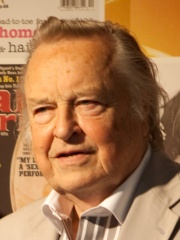
5. Eero Aarnio (b. 1932)
With an HPI of 62.80, Eero Aarnio is the 5th most famous Finnish Architect. His biography has been translated into 24 different languages.
Eero Aarnio (born 21 July 1932) is a Finnish designer, noted for his innovative furniture designs in the 1960s, such as his plastic and fibreglass chairs. He was born in Helsinki. Aarnio studied architecture at the Institute of Industrial Arts in Helsinki and graduated in 1960. He started his own office in 1962. The following year, he introduced his Ball Chair, a hollow sphere on a stand, open on one side to allow a person to sit within. The Ball Chair was introduced to the international public at the Asko stand at the Cologne furniture fair in 1966. The similar Bubble Chair was clear and suspended from above. Other innovative designs included his Pastil Chair (a beanbag-like molded armchair), and Tomato Chair (a seat molded between three supporting spheres). His Screw Table, as the name suggests, had the appearance of a flat head screw driven into the ground. He was awarded the American Industrial Design award in 1968. Aarnio's designs were an important aspect of 1960s popular culture, and could often be seen as part of sets in period science-fiction films. Because his designs used very simple geometric forms, they were ideal for such productions. Eero Aarnio continues to create new designs, including toys and furniture for children. He was awarded the Compasso d'Oro in 2008 for a design called Trioli, a combination rocking horse and child-sized chair which is part of a collection for Magis. Many of Aarnio's original designs are today manufactured by Eero Aarnio Originals, which was established in 2016. In Tite Kubo's manga series Bleach, the character Aaroniero Arruruerie is named after Eero Aarnio.

6. Elissa Aalto (1922 - 1994)
With an HPI of 61.47, Elissa Aalto is the 6th most famous Finnish Architect. Her biography has been translated into 23 different languages.
Elissa Aalto (born Elsa Kaisa Mäkiniemi; 22 November 1922 – 12 April 1994) was a Finnish architect.

7. Lars Sonck (1870 - 1956)
With an HPI of 57.30, Lars Sonck is the 7th most famous Finnish Architect. His biography has been translated into 17 different languages.
Lars Eliel Sonck (10 August 1870 – 14 March 1956) was a Finnish architect. He was a prominent figure in early 20th-century Finnish architecture, known for his role in developing the National Romantic and later Nordic Classicism movements in Finland. Sonck graduated from the Polytechnic Institute of Helsinki (now Aalto University) in 1894. That same year, at age 23, he won the design competition for St Michael's Church, Turku, marking his professional breakthrough. While the church was designed in the Neo-Gothic style, Sonck’s later work evolved through Art Nouveau, National Romanticism, and ultimately Nordic Classicism during the 1920s.

8. Wivi Lönn (1872 - 1966)
With an HPI of 55.78, Wivi Lönn is the 8th most famous Finnish Architect. Her biography has been translated into 20 different languages.
Wivi Lönn (20 May 1872 – 27 December 1966), born as Olivia Mathilda Lönn, was a Finnish architect. She was the first woman to be awarded the honorary title of "Professor" by the Finnish Association of Architects.

9. Johan Sigfrid Sirén (1889 - 1961)
With an HPI of 50.65, Johan Sigfrid Sirén is the 9th most famous Finnish Architect. His biography has been translated into 15 different languages.
Johan Sigfrid Sirén (27 May 1889 – 5 March 1961) was a Finnish architect. He is best known for Parliament House, which is where the Parliament of Finland meets.
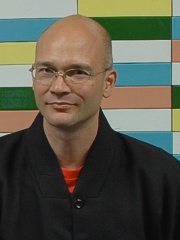
10. Marco Casagrande (b. 1971)
With an HPI of 49.94, Marco Casagrande is the 10th most famous Finnish Architect. His biography has been translated into 23 different languages.
Marco Mario Paolo Casagrande (born 7 May 1971) is a Finnish architect, environmental artist, architectural theorist, former mercenary, writer and professor of architecture. He graduated from Helsinki University of Technology department of architecture (2001). Casagrande has been identified as an anarchist architect.
People
Pantheon has 11 people classified as Finnish architects born between 1870 and 1971. Of these 11, 3 (27.27%) of them are still alive today. The most famous living Finnish architects include Eero Aarnio, Marco Casagrande, and Anders Adlercreutz. The most famous deceased Finnish architects include Alvar Aalto, Eliel Saarinen, and Aino Aalto. As of April 2024, 1 new Finnish architects have been added to Pantheon including Anders Adlercreutz.
Living Finnish Architects
Go to all RankingsEero Aarnio
1932 - Present
HPI: 62.80
Marco Casagrande
1971 - Present
HPI: 49.94
Anders Adlercreutz
1970 - Present
HPI: 46.18
Deceased Finnish Architects
Go to all RankingsAlvar Aalto
1898 - 1976
HPI: 81.52
Eliel Saarinen
1873 - 1950
HPI: 66.10
Aino Aalto
1894 - 1949
HPI: 65.64
Eero Saarinen
1910 - 1961
HPI: 64.40
Elissa Aalto
1922 - 1994
HPI: 61.47
Lars Sonck
1870 - 1956
HPI: 57.30
Wivi Lönn
1872 - 1966
HPI: 55.78
Johan Sigfrid Sirén
1889 - 1961
HPI: 50.65
Newly Added Finnish Architects (2025)
Go to all RankingsOverlapping Lives
Which Architects were alive at the same time? This visualization shows the lifespans of the 8 most globally memorable Architects since 1700.


